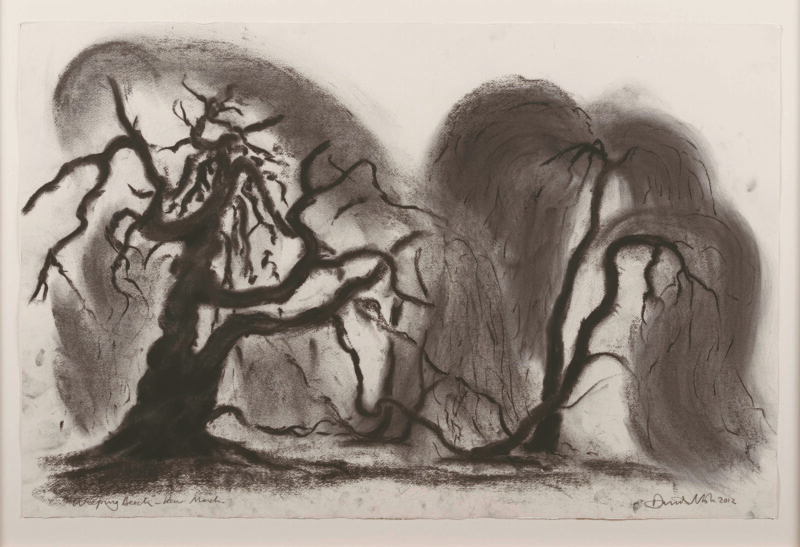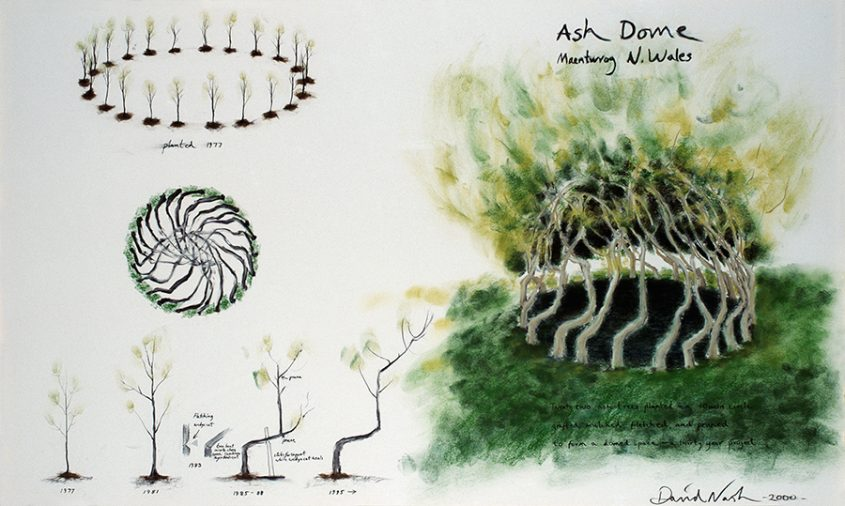There is a previous detailed post on charcoal and how it can be made. However issues of sustainability in relation to charcoal production were not picked out and as sustainability is so important, I have decided to re-visit my posts on various art materials and to develop eco-narratives around them.
First of all there are considerations in manufacture if you are not making your own charcoal. Watch this video on how a specialist charcoal supplier makes charcoal ready for art supply shops and similar outlets. On the one hand it's very good to hear that they source their willow locally and that they work in relation to a specific location so don't have to have raw material shipped in and that they have managed to keep their workers in employment over a long period of time, which suggests that they are good employers. On the negative side they have to transport their charcoal to all the various art shop outlets, so their carbon footprint is probably going to be at its worst in relation to distribution rather than manufacture. Some charcoal producers state that that their artist quality charcoal is made from Natural Willow cut offs that would usually be discarded, and some like the Dorset Charcoal Company, set out in detail how they manage their charcoal production ecologically. In their case a mobile charcoal burner system allows the company to respond to the changing needs of their local woodland and they are seeking to be beneficial to local woodlands and wildlife. Visit their site to find out more about how to spot charcoal made from unsustainable tropical wood sources. However, no matter how good their carbon footprint, there will always be distribution costs, which is why you might consider making your own at home.
Most charcoal is actually made as fuel for fires. This is still a vital source of heat for cooking in Africa and there are both good and bad practices going on. Sustainable charcoal production requires owners of natural woodland to maintain forest cover over time, rather than converting it to other land uses, such as large scale agriculture. However sustainable production is more likely to be achieved in woodlands with secure tenure with formalised management and harvesting plans designed to maintain the broad ecosystem functions of the forest or woodland. For instance in Niger and Senegal the adoption of formalised, community-based wood fuel production has resulted in an increase in the diversity and health of the forest stock (de Miranda et al., 2010). However in other areas of Africa unsustainable harvesting, has contributed to widespread forest degradation and deforestation, particularly in the vicinity of concentrated markets, such as large urban areas (Chidumayo and Gumbo, 2013). A very brief look at charcoal production in its wider context quickly raises issues about localised and global production and the maintenance of interconnected forest or woodland ecosystems. These issues are of course related to the production of charcoal for burning, but the maintenance of healthy woodlands and forests is of significance to everyone, and whether charcoal production is for fire or for drawing, it can either be done sensitively and in co-operation with an understanding of the local eco-system, or not.
If you are to use charcoal and want to make a point about why you are making it yourself, you could indicate how you are thinking about sustainable resources in a wider context. You might consider issues such where willow is grown in relation to where you are? How should you harvest it if you want to ensure it is not depleted? Perhaps you might research what other wood is available to you locally and in what form does it come, (old bits of furniture, wood picked out of skips, branches and twigs from local trees etc.). Test local trees for types of charcoal, some will make for a reddish brown mark, others darker browns or light blacks and some will be scratchy and break into tiny pieces and others very soft. If you are making a charcoal oven, could this be part of the idea? Could you set up a sustainable charcoal production facility? Perhaps making charcoal of various sorts for the local arts community. In doing so you could help others become more self-reliant and make them more aware of how charcoal is made. Could you oversee your charcoal production as part of a local interconnected woodland ecosystem? It is important to think about this, because over 90% of all charcoal consumed in this country comes from overseas, predominantly the endangered tropical rainforest and mangrove habitats of South America, West Africa and South East Asia. In addition to the damage caused by unsustainable forestry practices in these regions, is the negative environmental impact arising from the consumption of fossil fuels transporting charcoal so far around the world.
One artist in particular has deeply explored the relationship between ecology and charcoal, and that is David Nash, who is also exhibiting at the Yorkshire Sculpture Park at the moment. Using fallen trees, Nash has made sculptures and charcoal drawings that explore environments and ecosystems as points of intersection between nature and art. As he says, “trees take just enough and give back more”. Drawing is central and constant in Nash’s practice. It is an alternative way of learning about and understanding his subject, of finding form for ideas and recording and responding to perceptions of his environment. He uses hand made smoky willow charcoal to create intense blacks, these he will soften or accompany with softer warmer colours made from ash or oak; bold swathes of colour are achieved by using pure pigment dug out from the ground, mixed with burnt wood and ashes and wiped onto his drawings with bare hands. He uses local streams in which to dissolve ground down homemade charcoal alongside various natural pigments, which then become his inks, his ideas are often driven by the particular qualities of certain trees and their environments. His drawing Ash Dome (2007) was created using ash charcoal and earth taken from the surrounding ground, and he uses diagrammatic drawing to demonstrate the aesthetic associations and familial links between various aspects of his ecologically tuned ideas.
Working directly with fallen twigs and other 'pick-up' elements of a natural habitat might be even more ecologically friendly. For instance every stick can be a drawing implement. When you make marks with sticks you will find them expressive and they will help you achieve a much wider range of line quality. If you have no ink to dip the sticks into, just collect local soil, add water and draw using dirt. You can if you have more time extract colour from leaves. This video will show you how. Then when you draw both applicator and pigment will have a conceptual relationship.
Of course paper is also a material that is often made in unsustainable ways. I will be putting up a post on the issues specifically related to paper and sustainability in the near future, but in the meantime there are several other issues to think about in relation to paper, and you can read about those at some of the links set out below.
References
Chidumayo, E. N., and Gumbo, D. J. (2013). The environmental impacts of charcoal production in tropical ecosystems of the world: a synthesis. Energy Sustain. Dev. 17, 86–94. doi: 10.1016/j.esd.2012.07.004
De Miranda, R. C., Sepp, C., Ceccon, E., Mann, S., and Singh, B. (2010). Sustainable Production of Commercial Woodfuel: Lessons and Guidance from Two Strategies. Washington, DC: The World Bank.
See also:
Drawing on the principles of Permaculture









This comment has been removed by the author.
ReplyDelete